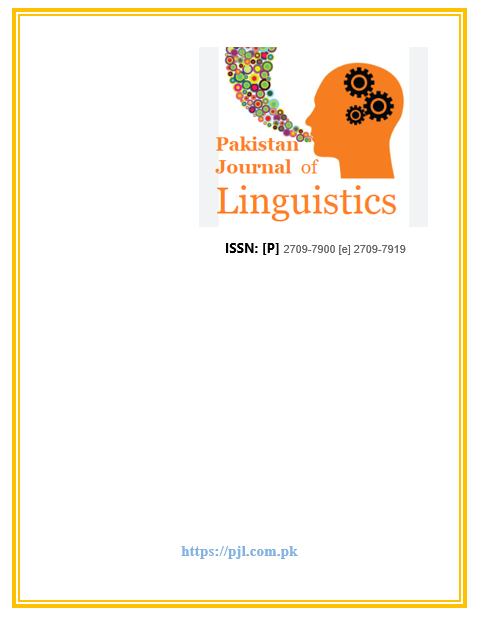POSTVOCALIC RHOTICITY IN PAKISTANI VS. BRITISH ENGLISH: AN ACOUSTIC ANALYSIS
Keywords:
Pakistani English, Received Pronunciation, rhoticity, acoustic phonetics, World EnglishAbstract
This study conducts a comparative acoustic analysis of postvocalic /r/ in Pakistani English (Pak E) and British Received Pronunciation (RP) among BS-level students. While RP is characteristically non-rhotic, PakE displays variable rhoticity influenced by Urdu retroflex /r/ and sociolinguistic factors. Using Praat software, productions of monosyllabic words (car, bar, door, far) were compared with RP references from the Oxford English Dictionary. Results show that Pak E /r/ is more rhotic, with longer duration (~0.39s vs. RP ~0.20s), higher intensity (~71.4 dB vs. RP 56–68 dB), and distinct acoustic features such as visible F4 (~3980 Hz) and lower F2 (~1068 Hz). In contrast, RP /r/ tends toward shorter, fronted approximants with elevated pitch (~218 Hz vs. PakE ~100 Hz). Findings highlight PakE’s divergence from RP, aligning it with rhotic varieties like American English, while reflecting L1 transfer. The study contributes to World Englishes research and offers pedagogical insights for pronunciation teaching.




